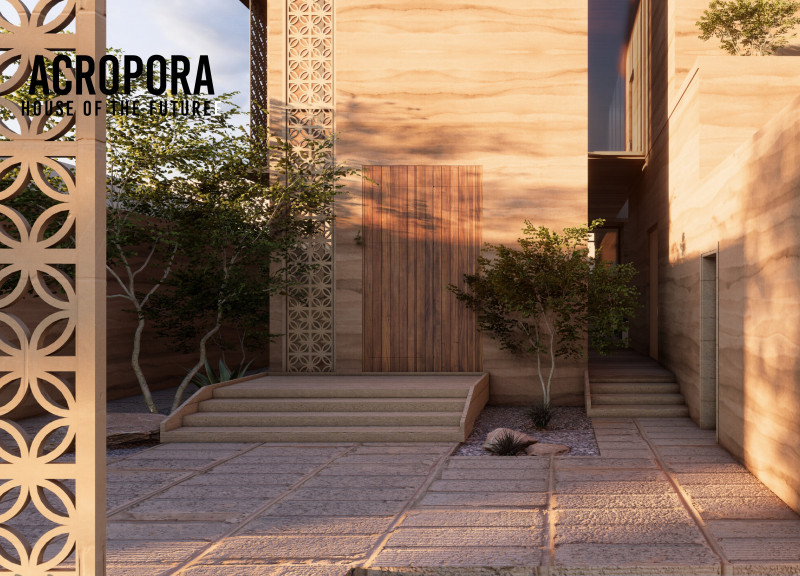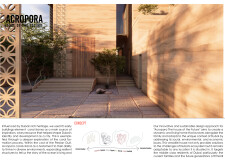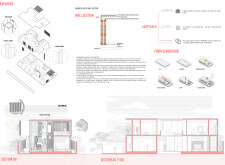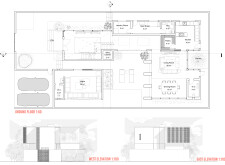5 key facts about this project
### Project Overview
Located in Dubai, the "Acropora: House of the Future" project explores themes of sustainability and adaptability in residential architecture. Drawing from the region's cultural and environmental context, the design meets contemporary living requirements while remaining responsive to future needs and environmental changes. The name "Acropora," inspired by a genus of coral, reflects the resilience and dynamic nature of both the home and its surroundings.
### Materiality and Construction Techniques
This residence prominently features rammed earth, which offers natural insulation and thermal mass, thereby reducing dependence on mechanical cooling systems in Dubai’s arid climate. The incorporation of wood in doors and structural elements adds warmth and tactile interaction to the living spaces. By utilizing natural materials, the design fosters a connection between the built environment and nature, aligning with biophilic principles that enhance overall well-being.
### Spatial Organization and Architectural Elements
The interior layout supports an open plan that facilitates movement and social interaction while providing distinct private and communal areas. Key spaces include a majlis, living and dining areas, and adaptable rooms for various uses. Outdoor integration is a key aspect, with gardens and patios that encourage connection to the environment. Traditional wind catchers are incorporated for natural ventilation, while flexible louvers allow occupants to control light and airflow, reinforcing the theme of adaptability. Coral-patterned screens provide privacy and aesthetic appeal, echoing local marine life and contributing to the home's distinctive character.
The project emphasizes sustainability in response to local challenges, integrating renewable energy solutions such as solar panels, enhancing its ecological footprint while remaining contextually relevant and economically viable for middle-class families in Dubai.





















































